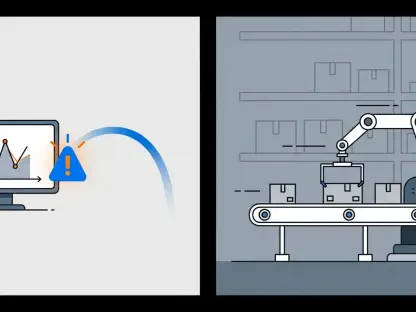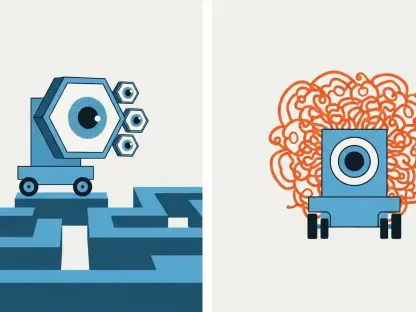Introducing Refashion: A Game-Changer for Sustainable Fashion
The fashion industry faces a staggering environmental crisis, with an estimated 92 million tons of textile waste generated annually from discarded clothing, much of which is driven by the relentless pace of fast fashion. Amid this challenge, a groundbreaking solution emerges through Refashion, a software developed by researchers at MIT’s Computer Science and Artificial Intelligence Laboratory (CSAIL) and Adobe. This innovative tool aims to transform clothing design by prioritizing modularity and reconfigurability, allowing garments to adapt to changing trends, body shapes, and personal needs without the need for constant replacement.
At its core, Refashion tackles the dual burden of environmental degradation and financial waste inherent in the fashion sector. By enabling users to redesign and reassemble clothing into new forms, it offers a direct counter to the throwaway culture that dominates modern apparel consumption. The software stands as a beacon of hope for reducing landfill contributions while promoting cost-effective wardrobe updates.
This development raises critical questions about the role of technology in reshaping fashion. Can digital tools like Refashion truly shift design practices toward sustainability? Moreover, can they empower both professional designers and everyday consumers to embrace eco-friendly habits in a meaningful way? These inquiries set the stage for a deeper exploration of the software’s potential impact.
The Urgent Need for Sustainability in Fashion
The environmental toll of the fashion industry is undeniable, with vast quantities of textiles ending up in landfills each year due to rapid trend cycles and overproduction. Beyond the sheer volume of waste, the energy and water consumption tied to manufacturing processes further exacerbate the sector’s ecological footprint. This crisis underscores a pressing need for solutions that address disposability at its root.
Economically and socially, the reliance on mass-produced, short-lived garments burdens consumers with frequent replacement costs while perpetuating labor exploitation in production chains. Sustainable design, therefore, emerges as a vital response, aiming to extend the lifecycle of clothing and reduce the demand for incessant new purchases. Refashion’s focus on adaptable, reusable garments aligns directly with this goal, offering a practical alternative to the current model.
Culturally, the shift from disposability to longevity in clothing use remains a significant hurdle. Changing consumer mindsets to value durability over fleeting trends requires innovative tools that make sustainable choices accessible and appealing. Refashion’s approach is pivotal in this context, as it not only provides the means to create lasting designs but also fosters a broader appreciation for mindful consumption within the industry.
Research Methodology, Findings, and Implications
Methodology
The development of Refashion represents a collaborative effort between MIT CSAIL and Adobe, harnessing computational expertise to innovate in fashion design. Central to the software is the “Pattern Editor,” a user-friendly tool that allows individuals to sketch modular clothing designs by connecting shapes on a grid-based interface. This feature simplifies the creation process, making it accessible to a wide range of users.
To evaluate the software’s effectiveness, researchers conducted user studies involving participants with varying levels of design experience. These tests focused on the ability to create prototypes within a 30-minute timeframe, utilizing reversible connectors such as snaps and Velcro for assembly instead of traditional sewing methods. The emphasis on quick, flexible construction aimed to demonstrate the practicality of modular garments in everyday scenarios.
Additionally, Refashion incorporates 3D simulations and digital blueprints to enhance design precision and inclusivity. These features enable users to visualize their creations on diverse body models, ensuring adaptability across different physiques. Such technological integration reflects a deliberate effort to bridge creative design with functional application, setting a new standard for accessibility in the field.
Findings
Results from the user studies revealed remarkable efficiency, as both novice and experienced participants successfully designed modular garments within the allotted time. For instance, some transformed an asymmetric top into a jumpsuit, showcasing the software’s capacity to facilitate versatile clothing configurations. This outcome highlights Refashion’s potential to make fashion design intuitive and achievable for all skill levels.
A key achievement of the software lies in its promotion of reusable clothing that significantly extends garment lifecycles. By enabling easy reconfiguration and repair, Refashion directly addresses the issue of textile waste, offering a tangible method to curb the environmental impact of discarded apparel. The ability to adapt existing pieces into new styles also reduces the need for additional purchases.
Expert feedback further validates these findings, with MIT professor Erik Demaine describing Refashion as a vital link between computational techniques and creative expression. Such endorsements underscore the software’s role in merging technology with artistry, paving the way for broader acceptance and application in the fashion domain. The positive response from both users and academics signals strong potential for widespread impact.
Implications
On a global scale, Refashion’s modular approach holds promise for substantial reductions in textile waste, aligning closely with international sustainability objectives. By embedding adaptability into the design phase, the software challenges the industry’s reliance on single-use garments, encouraging a rethink of production and consumption patterns. This shift could contribute meaningfully to environmental conservation efforts.
Commentator Adrien Bousseau from Inria Centre at Université Côte d’Azur suggests that Refashion could influence manufacturing processes by prioritizing modularity from the outset. If adopted by designers and brands, this perspective might lead to systemic changes in how clothing is produced, emphasizing reuse over mass production. Such a transformation would mark a significant step toward sustainable industrial practices.
Beyond industry impacts, Refashion democratizes fashion creation by empowering individuals to craft personalized, eco-conscious clothing without depending on mass-market options. This accessibility fosters a sense of ownership and creativity among consumers, potentially reshaping societal attitudes toward fashion as a dynamic, sustainable endeavor rather than a disposable commodity. The broader cultural implications of this shift are profound, encouraging active participation in sustainability.
Reflection and Future Directions
Reflection
Developing and testing Refashion presented unique challenges, particularly the initial limitation to basic prototyping fabrics and simpler garment structures. These constraints sometimes restricted the complexity of designs that users could achieve, highlighting the need for iterative improvements. Despite this, the focus remained on ensuring the software’s core functionality met sustainability goals.
To address early obstacles, researchers prioritized a user-friendly interface and flexible assembly techniques over conventional sewing methods. This decision proved effective, as participants quickly adapted to using reversible connectors for prototyping, demonstrating the software’s intuitive design. The emphasis on ease of use laid a strong foundation for broader accessibility and engagement.
Looking ahead, areas for expansion include supporting more intricate garment architectures and enhancing the long-term durability of designs. Addressing these gaps will be crucial for scaling Refashion’s applicability beyond initial prototypes to everyday wear. Continuous refinement in these aspects remains a priority to ensure the software meets diverse user needs over time.
Future Directions
Enhancements to Refashion could involve integrating support for durable materials that withstand repeated reconfigurations, moving beyond basic fabrics. Additionally, incorporating features for curved panels and minimized material use would further reduce waste while enabling more sophisticated designs. These advancements aim to elevate the software’s practical utility in real-world applications.
Lead researcher Rebecca Lin envisions future research into personalized design elements, such as incorporating varied colors, textures, and recycled materials like denim or crochet blocks. Such customization options would allow users to create unique, sustainable pieces tailored to individual preferences. This direction promises to enrich the creative potential of the platform significantly.
Another avenue for exploration is adapting Refashion to modify existing store-bought clothing, bridging the gap between innovative design and everyday practicality. Enabling users to reconfigure off-the-shelf garments could expand the software’s reach, making sustainability an integral part of daily fashion choices. This potential application holds exciting possibilities for mainstream adoption starting from 2025 onward.
Shaping the Future of Fashion with Refashion
Refashion stands as a transformative force in the fashion industry, championing sustainability through modular, adaptable clothing designs. By reducing textile waste, democratizing the design process, and accommodating evolving personal needs, the software addresses critical environmental and economic challenges. Its seamless integration of technology into a traditionally creative field exemplifies a forward-thinking approach to problem-solving.
The alignment of Refashion with global sustainability trends reinforces its relevance in today’s context. It not only offers a practical tool for designers and consumers but also inspires a cultural shift toward valuing longevity in apparel. This synergy between innovation and eco-consciousness positions the software as a leader in redefining industry standards.
Reflecting on the journey, the development of Refashion marked a significant stride in combating fast fashion’s detrimental effects. Looking back, the collaborative efforts and user feedback shaped a tool that challenged conventional design norms. As a next step, stakeholders should focus on scaling its adoption through partnerships with fashion brands, integrating advanced material support, and promoting educational initiatives to teach sustainable design principles, ensuring that the momentum toward a reusable, dynamic fashion future continues to grow.









